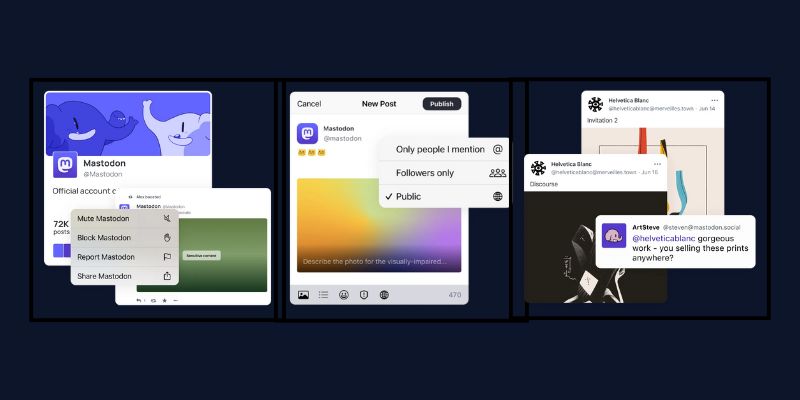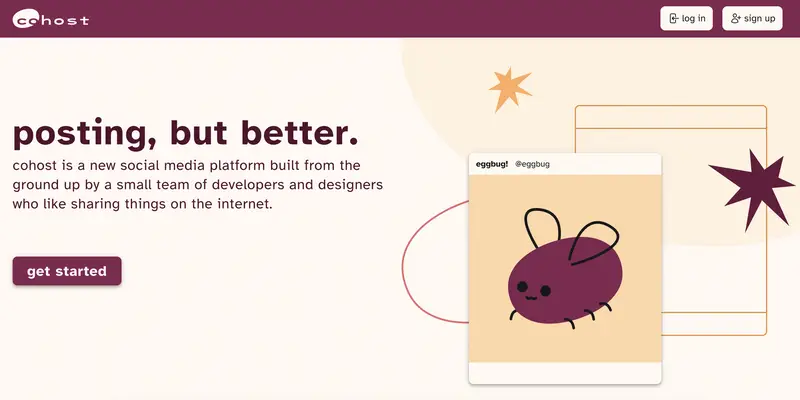Since its rebranding to X in July 2023, the platform formerly known as Twitter has undergone significant transformations under Elon Musk’s leadership. These changes have sparked discussions and led many users to explore alternative platforms.
Elon Musk’s acquisition of Twitter in October 2022 marked the beginning of a new era for this platform. His vision emphasized free speech, leading to the reinstatement of those banned before, including that of former President Donald Trump. But this approach also resulted in the disbandment of Twitter’s Trust and Safety Council and a significant reduction in content moderation staff.
These decisions have had tangible effects. A study by the University of California, Berkeley, found that hate speech on the platform increased by approximately 50% in the months following Musk’s takeover. Additionally, the platform faced criticism for algorithm changes that some argue promote certain political viewpoints, raising concerns about neutrality and user experience.
Despite these controversies, X maintains a large user base. As of early 2025, the platform boasts approximately 611 million monthly active users and 245 million daily active users. But, it’s worth noting that these figures represent a decline from previous years, with reports indicating a loss of around 32 million users since Musk’s acquisition.
Engagement metrics have also seen shifts. While the platform continues to be a hub for real-time news and discussions, changes in content moderation and algorithmic adjustments have influenced user interaction patterns.
In response to these developments, a growing number of users are seeking platforms that align more closely with their expectations for community standards, content moderation, and user experience. This has led to increased interest in Twitter alternatives that offer diverse features, governance models, and community guidelines.
In this blog, we’ll explore some of the most prominent alternatives to Twitter in 2025, examining their unique offerings and how they cater to various user needs.
We’re digging into:
- The unique features that set each platform apart
- Pros and cons based on real-world usage
- Who each platform is best suited for (and who might want to skip it)
Our expert opinion on where each app fits into the future of social networking
Whether you’re planning to leave Twitter or just curious about what else is out there, this guide will help you explore your options with clarity and confidence.
Let’s dive into the best Twitter alternatives worth your time.
What to Look for in a Twitter X Alternative
Not all Twitter alternatives are created equal—and that’s a good thing.
Whether you’re leaving X permanently or just testing the waters, knowing what to look for in a new platform will help you find the one that fits your needs best. From content formats and moderation to monetization and community type, each alternative brings something unique to the table.
Here are the key criteria to consider when choosing a Twitter alternative:
Core Features: Does It Feel Familiar—or better?
Before jumping ship, ask yourself: What did I value most about Twitter? Was it the speed of breaking news? The short-form content style? Real-time engagement with followers?
Look for alternatives that offer:
- Real-time updates: Can you follow live events, trending topics, or fast-paced discussions?
- Character limits: Does it support microblogging (e.g., 280 characters) or offer longer-form content?
- Threading: Can you create structured conversations?
- Searchability & hashtags: Are posts easy to find and categorize?
A good Twitter alternative won’t just copy Twitter—it should improve where Twitter has fallen short.
Community and Audience: Who’s Hanging Out There?
Each platform attracts a different crowd. To thrive on a new network, it helps to know who you’re talking to.
Here’s how some Twitter alternatives position themselves:
- Creators & influencers: Look for platforms with tools for engagement, discoverability, and monetization (e.g., Threads, Substack Notes).
- Tech-savvy or privacy-first users: Platforms like Mastodon or Bluesky appeal to users who value decentralization and control.
- Professionals & thought leaders: LinkedIn (for micro-updates) may suit journalists, analysts, and business voices.
- Communities & niches: Smaller platforms often serve tight-knit groups with shared interests, like artists, activists, or academics.
Make sure the platform aligns with both your content and your audience.
Monetization & Business Features
If you use Twitter/X for business, promotion, or creator income, monetization matters.
Questions to ask:
- Can I earn from content? (via tips, subscriptions, ad revenue sharing, etc.)
- Are there ad tools or analytics?
- Does the platform support branded content or creator partnerships?
Some emerging platforms are experimenting with Web3-based monetization, while others are integrating more traditional tools like newsletter subscriptions, affiliate links, or gated communities.
Privacy & Moderation: Who Controls the Platform?
After Twitter’s controversial shifts in content moderation, many users are prioritizing trust and safety in their social media experience.
- Who moderates the content? (central team vs. user-controlled instances)
- Is the algorithm transparent?
- Can I block, mute, or filter content effectively?
- Does it respect user data and privacy policies?
Platforms like Mastodon and Bluesky aim to give users more control over their data and feed experience, while others like Threads follow a more centralized, editorial approach.
List of Best Twitter X Alternatives in 2025
Social media is changing, and users are actively searching for platforms that work better than Twitter. Whether you’re frustrated by Twitter’s recent changes or just exploring new options, here are the top Twitter alternatives in 2025, ranked by usefulness, innovation, and community growth.
#1 Bluesky – The Closest Twitter Replacement (With a Catch)

Bluesky has rapidly emerged as the go-to Twitter clone—unsurprising, given it was co-founded by Jack Dorsey, Twitter’s own former CEO. As of early 2025, Bluesky boasts over 10 million users, fueled by the removal of its invite-only restriction in early 2024. But while it’s often positioned as a like-for-like Twitter replacement, there are nuances worth noting.
Key Advantages:
Familiar UI/UX: Feels nearly identical to Twitter, from post formatting to replies.
Custom Feeds: Users can create and subscribe to algorithm-free feeds based on interests, hashtags, or specific users—something Twitter never nailed.
Open Protocol: Built on the decentralized AT Protocol, Bluesky supports data portability, giving users more control over their online identity.
Limitations to Consider:
Isolated Ecosystem: Unlike Mastodon, which uses the widely adopted ActivityPub protocol, Bluesky is currently incompatible with other decentralized platforms (like Threads or Mastodon).
Missing Features: Direct Messages (DMs), long-form posts, and integrated video tools are still either missing or underdeveloped.
Early Culture Still Forming: Bluesky’s culture is Twitter-esque but not fully defined, which can be disorienting for brands or marketers trying to find their voice.
#2 Mastodon – Best for Federated, Privacy-Focused Communities

Mastodon is a decentralized, open-source social network that’s part of the broader “Fediverse”—a network of independently operated servers (called instances) that interconnect but remain autonomous. Launched in 2016, Mastodon surged in popularity during periods of upheaval at Twitter, attracting users looking for a more community-driven, ethically designed platform.
Rather than mimicking Twitter’s structure, Mastodon offers a fundamentally different model. It’s built around user choice, consent, and moderation, with no central owner or algorithm dictating what you see.
Key Advantages:
- Federated and User-Controlled: Users pick or create servers based on shared interests or values (e.g., art, journalism, LGBTQ+, tech). No single entity owns the network.
- No Ads, No Tracking: Mastodon runs without advertising or engagement algorithms—your feed is chronological and under your control.
- Data Portability: You can move your account between servers without losing your followers—a level of portability big platforms like Twitter don’t offer.
Limitations to Consider:
- Learning Curve: The concept of federation and choosing an instance can be confusing for newcomers.
- Uneven Experience: Each server sets its own rules, moderation style, and features, which can vary significantly.
- Limited Mainstream Adoption: It’s popular in niche and tech-savvy circles but hasn’t yet reached the mainstream audience size of centralized platforms.
#3 Threads by Meta – Mainstream Twitter Alternative with Instagram Roots

If you’re looking for a Twitter alternative for creators or influencers, Threads by Meta is the most accessible option. Launched in mid-2023 as a text-based companion to Instagram, Threads saw explosive growth—over 100 million users within its first week—thanks to Meta’s built-in user base and seamless onboarding.
Threads mirrors the core idea of Twitter: short text updates, replies, and reposts. However, it’s deeply tied to Instagram. Your Threads profile is essentially an extension of your IG identity, which makes it easy to grow followers but limits anonymity and flexibility.
Key Advantages:
- Instant Onboarding: Sign up easily using your Instagram account, retaining followers and profile identity.
- Massive Reach: Backed by Meta, Threads gained over 100M users within days of launch.
- Creator-Friendly: Integrates with Instagram and Meta’s suite of tools for creators and advertisers.
Limitations to Consider:
- Limited Functionality: No hashtags, trending topics, or advanced search features—yet.
- Algorithmic Feed: Lacks true chronological control, with content surfaced based on engagement.
- Content Filters: Meta deprioritizes political, news, and controversial content, limiting discourse depth.
#4 Spill – A Twitter Alternative for Black Creators and Culture-Driven Communities

Spill is a visual-first, community-led app that proudly positions itself as a Twitter alternative built for culture and safety. Developed by former Twitter engineers and launched in 2023, Spill was designed in response to Twitter’s growing issues with harassment, bias, and lack of content moderation.
Spill centers marginalized voices, especially Black creators, and celebrates meme culture, viral content, and expressive storytelling. It’s not just a Twitter clone—it’s a fresh rethinking of social media identity, safety, and inclusion.
Key Advantages:
- Culture-First Design: Built with input from Black creators and meme culture communities.
- Visual Storytelling: Image and GIF-driven feed enhances engagement and identity expression.
- Safety by Design: Tools like auto-moderation, proactive content filtering, and block support prioritize user safety.
Limitations to Consider:
- Invite-Only (as of 2025): Growth is restricted to protect community quality and onboarding.
- Smaller Audience: Still growing its user base, so reach and engagement are limited.
- Feature-Light: Some core social features (e.g., advanced search, analytics) are still in development.
#5 Hive Social – A Visually Driven Twitter Alternative with Gen Z Appeal

Hive Social blends the simplicity of Twitter with the visual richness of Instagram, creating a hybrid social platform that appeals to Gen Z and lifestyle creators. Initially launched in 2019, it gained rapid popularity in late 2022 during one of Twitter’s chaotic policy shifts, and has since become a go-to for users who want microblogging without the pressure.
Unlike decentralized platforms, Hive is centralized and ad-free (for now), offering a sleek experience that encourages expression, discovery, and mood-based posting.
Key Advantages:
- Fresh Hybrid Design: Combines Twitter-like posts with Instagram-style visuals and aesthetics.
- Chronological Feed: No algorithm interference; posts are shown as they’re made.
- Unique Personalization: Music on profiles and more customizable options attract Gen Z users.
Limitations to Consider:
- Resource-Limited Development: A small dev team means slower updates and occasional bugs.
- Mobile-Only Focus: Limited desktop support makes it less versatile for professionals.
- No Monetization Tools: Currently lacks features like tipping or subscriptions for creators.
#6 Cohost – Twitter Alternative for Creatives Who Hate Algorithms

Cohost is a newer social media platform that’s gaining attention as a possible alternative to Twitter. Created by a small team of passionate developers and designers, it’s built with a focus on simplicity and genuine content sharing. Like Twitter, you can follow other users and see their posts, but what sets Cohost apart is its use of a chronological feed—there’s no algorithm deciding what you see. It also puts a strong emphasis on user privacy, with no ads or trending topics cluttering your experience.
It launched quietly in 2022 but has built a loyal, creative user base that values thoughtful posts over trending noise.
Key Advantages:
- No Algorithms or Ads: Built intentionally to avoid engagement traps and revenue-based manipulation.
- Long-Form Friendly: Great for essays, dev logs, or serialized creative content.
- Collaborative Posts: Unique feature allowing multiple users to co-author a single post.
Limitations to Consider:
- Web-Only Platform: No native mobile apps as of 2025.
- Tiny User Base: Limited interaction and virality potential.
- Limited Content Discovery: No hashtags, trending feeds, or advanced search.
#7 Substack Notes – Microblogging Meets Newsletters
Launched in 2023, Substack Notes is an offshoot of the popular newsletter platform Substack. It blends short-form, tweet-style posts with long-form writing, allowing authors to build and engage an audience across formats. It’s one of the best Twitter alternatives for writers, thought leaders, and niche content creators.
What makes Substack Notes powerful is its built-in reader base—users already following writers’ newsletters now get bite-sized updates in between big posts.
Key Advantages:
- Writer-Centric Ecosystem: Seamlessly integrates micro-posts and long-form newsletters.
- Built-In Monetization: Supports paid subscriptions, tipping, and gated content for creators.
- Direct-to-Reader Model: No algorithm to limit reach—followers see everything you post.
Limitations to Consider:
- Narrow Audience: Tailored for writers, not general users or meme-driven culture.
- Basic Interaction Tools: Still evolving features like replies, threading, and media embeds.
- Limited Discovery: No robust search, trending, or recommendation engine—yet.
Final Thoughts: Which Twitter Alternative Should You Try First?
Twitter may still be a household name, but it’s no longer the one-size-fits-all platform it once was. The surge of alternatives in recent years has created a more diverse and user-focused social media landscape, each platform offering its own spin on how we connect, share, and engage online.
So, Which One Should You Try First?
The best Twitter alternative for you depends on what you’re looking for:
- Want a near-identical Twitter feel? Try Bluesky—it’s the closest clone, with better user control and decentralization.
- Prefer thoughtful conversation and privacy? Go with Mastodon or WT.Social—ideal for clean, curated discussions.
- Already active on Instagram? Start with Threads—especially if you’re a creator or lifestyle brand.
- Looking for niche communities or creative freedom? Try Cohost, Hive Social, or Spill—they all offer distinct flavors with tight-knit user bases.
- Want a platform for writing, journalism, or long-form content? Check out Post News or Substack Notes—perfect for serious thinkers and newsletter writers.
Start with the platform that fits your goals, not just your habits.
Can Any Platform Truly Replace Twitter?
The short answer? Not entirely.
Twitter (or X) still offers unmatched global reach, real-time news, and cultural impact, especially for breaking events. But in trying to be everything to everyone, it’s also lost the focus and trust that made it special.
What we’re seeing in 2025 isn’t just a replacement—it’s a redistribution. Different platforms are stepping in to serve different pieces of the original Twitter experience:
- News and thought leadership? → Post News, Substack Notes
- Fast-paced public discourse? → Bluesky, Threads
- Safe, expressive communities? → Spill, Hive, Cohost
And perhaps that’s a good thing.
Instead of depending on a single platform, users now have the power to choose environments that reflect their values, protect their privacy, and support their creative goals.

